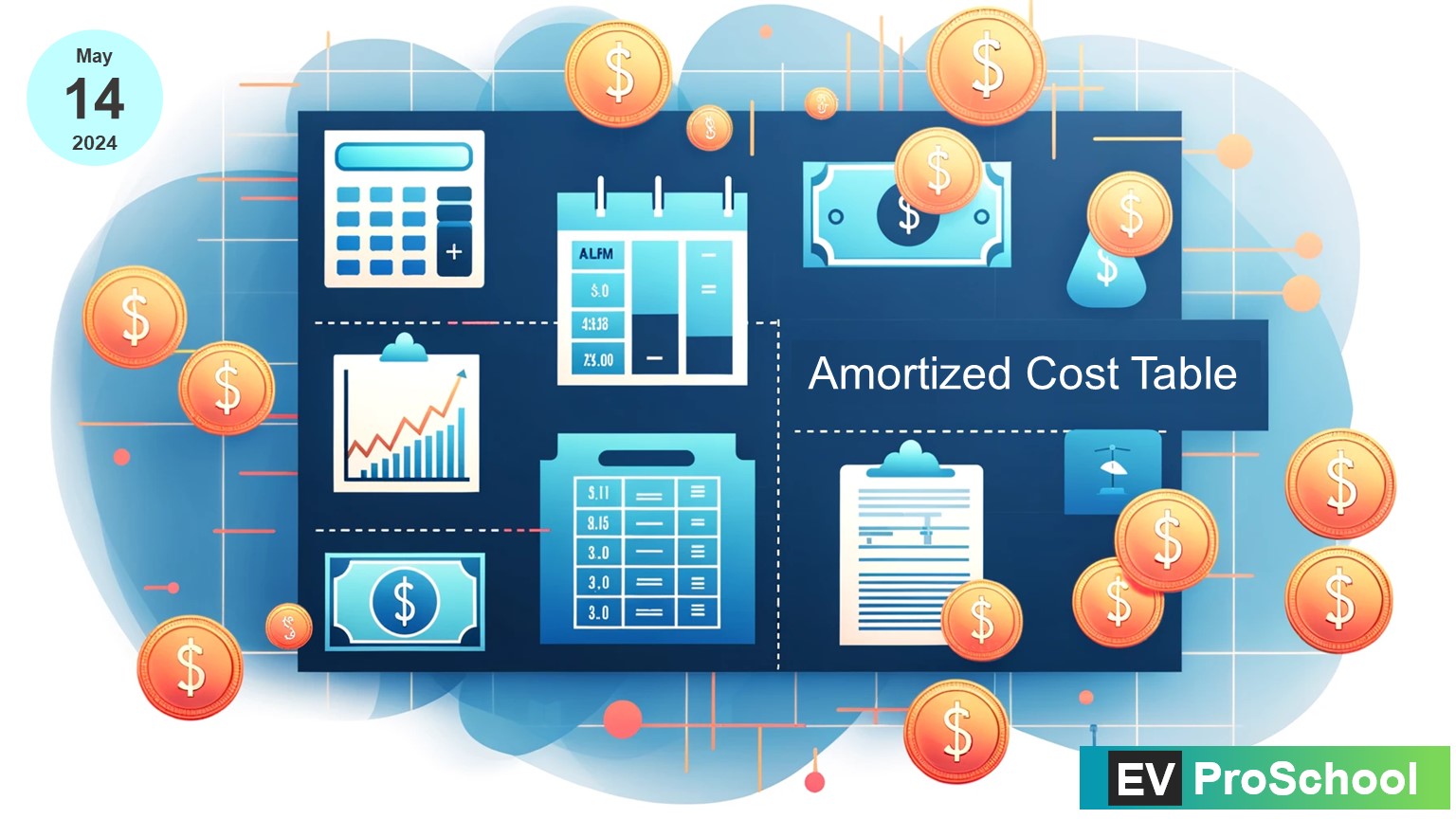Navigating the financial landscape can be as intricate as engineering the latest electric vehicle (EV). Understanding the key terminologies involved in bond financing is crucial for stakeholders in the EV industry. Let’s charge through these terms and what they mean for an EV company considering debenture issuance.
Driving Through Financial Terms:
Example: ElectroVolt Debenture Issuance
ElectroVolt, an emerging EV manufacturer, decides to issue Bonds to fund its new battery technology research. Here’s how the terms apply.
| Term | Definition | “ElectroVolt” Example |
|---|---|---|
| Par Value | Nominal value of a bond | INR 1,000 (per debenture) |
| Coupon Rate | Interest rate based on par value | 6% of INR 1,000 = INR 60 (annual interest per debenture) |
| Discount | Reduction from par value at issuance | 2% of INR 1,000 = INR 20 (debenture sold at INR 980) |
| Redemption Date | Date when principal is due to be repaid | 7 years from issuance |
| Premium | Extra amount above par value at repayment | 5% of INR 1,000 = INR 50 (debenture repaid at INR 1,050) |
| Effective Interest Rate | True cost of borrowing over the life of the bond, considering all charges | Calculated via IRR to include discount and coupon rate |
Let’s assume ElectroVolt is issuing 5,000 debentures. The initial entry on the day of the issue would be:
| Date | Debit (INR) | Credit (INR) | Notes |
|---|---|---|---|
| Issue Date | Cash | 4,900,000 | (5,000 debentures * INR 980) |
| Discount on Bonds Issued | 100,000 | (5,000 debentures * INR 20) | |
| Bonds Payable | 5,000,000 |
At each year-end, ElectroVolt will recognize interest expense and the effective interest rate will be used to amortize the bond discount. If we assume the effective interest rate determined via IRR is 6.5%, the year-end entry for the first year would be:
| Date | Debit (INR) | Credit (INR) | Notes |
|---|---|---|---|
| Year-End | Interest Expense | 325,000 | (6.5% of INR 5,000,000) |
| Cash | 300,000 | ||
| Discount on Bonds Issued | 25,000 |
On the balance sheet, the bonds will be reported at their amortized cost, gradually increasing each year as the discount is amortized until it reaches the par value at redemption. The coupon payments will appear as expenses in the profit and loss statement, impacting ElectroVolt’s net income.
Amortized cost of a Financial Asset or Liability
Amortized Cost is a method of valuing financial instruments (like bonds or loans) by adjusting the initial cost for interest and principal repayments over time. Here’s a simplified explanation:
Amortized Cost: It is the initial measurement of a financial instrument, adjusted for any interest that accumulates and any payments made against it.
The interest is usually calculated based on the effective interest rate, which is the rate that exactly discounts estimated future cash payments through the expected life of the financial instrument.
Here’s how you can set up the table:
| Year | Opening Balance (INR) | Effective Interest (8%) | Total Before Coupon (INR) | Coupon Interest Paid (5%) | Closing Balance (INR) |
|---|---|---|---|---|---|
| 1 | 10,00,000 | 80,000 | 10,80,000 | 50,000 | 10,30,000 |
| 2 | 10,30,000 | 82,400 | 11,12,400 | 50,000 | 10,62,400 |
| 3 | 10,62,400 | 84,992 | 11,47,392 | 50,000 | 10,97,392 |
To explain the table:
- Year: Tracks the year of the bond since issuance.
- Opening Balance: The value of the bond at the start of the year.
- Effective Interest: Interest accrued during the year, calculated as the opening balance multiplied by the effective interest rate (8% in our example).
- Total Before Coupon: The sum of the opening balance and effective interest.
- Coupon Interest Paid: The cash paid as interest to bondholders, calculated as the opening balance multiplied by the coupon rate (5% in our example).
- Closing Balance: The value of the bond liability at the end of the year after paying the coupon interest.
This closing balance becomes the opening balance for the following year, and the process repeats each year. The effective interest increases slightly each year as the carrying amount of the liability increases due to the amortization of the discount.
A Statement of Financial Position (SOFP), also known as a balance sheet, and a Statement of Profit or Loss (SOPL), also known as an income statement, are key financial statements that reflect a company’s financial health. Based on the example provided for “ElecDrive,” I will outline how these statements might be structured, considering the amortization of a financial liability over a three-year period.
Let’s assume that the only transactions affecting “ElecDrive’s” financials are related to the issuance of the bond and the annual interest payments. Note that in reality, a company’s financial statements would include many other financial figures.
Statement of Financial Position (SOFP) for “ElecDrive”
As of December 31, Year 3
| ASSETS | Year 1 (INR) | Year 2 (INR) | Year 3 (INR) |
|---|---|---|---|
| Non-current assets | |||
| (e.g., Property, Plant & Equipment) | |||
| Current assets | |||
| (e.g., Cash and Cash Equivalents) | |||
| TOTAL ASSETS |
| EQUITY AND LIABILITIES | Year 1 (INR) | Year 2 (INR) | Year 3 (INR) |
|---|---|---|---|
| Equity | |||
| (e.g., Issued capital, Retained earnings) | |||
| Non-current liabilities | |||
| (e.g., Bonds payable) | 10,30,000 | 10,62,400 | 10,97,392 |
| Current liabilities | |||
| (e.g., Trade payables) | |||
| TOTAL EQUITY AND LIABILITIES |
Statement of Profit or Loss (SOPL) for “ElecDrive”
For the Year Ended December 31
| Description | Year 1 (INR) | Year 2 (INR) | Year 3 (INR) |
|---|---|---|---|
| Revenue | |||
| Cost of sales | |||
| GROSS PROFIT | |||
| Other income | |||
| Administrative expenses | |||
| Other expenses | |||
| OPERATING PROFIT | |||
| Finance costs | 80,000 | 82,400 | 84,992 |
| PROFIT BEFORE TAX | |||
| Tax expenses | |||
| PROFIT FOR THE YEAR |
In the above tables:
- Assets would include all assets the company owns. Since our example only includes the bond liability, we are not listing specific asset figures.
- Equity would show the shareholders’ equity. For simplicity, it is not detailed here.
- Non-current liabilities include the bond payable, where the closing balance from the amortization table is used.
- Revenue and Cost of sales are not detailed as our example is focused on the bond issuance.
- Finance costs reflect the effective interest calculated for the bond liability for each year.
These tables are highly simplified and would need to be expanded to include all relevant financial details for an actual company. The numbers inserted for bond liability and finance costs are taken from the previous example discussed.
Conclusion :Exploring the Possibilities
For ElectroVolt, issuing debentures can be a strategic move to secure funding while maintaining control as opposed to equity financing, which could dilute ownership. The coupon rate provides investors with a steady return, and the issuance at a discount makes the debentures attractive by offering them at a price lower than the redemption value.
As the EV market grows, companies like ElectroVolt will continue to explore innovative financial mechanisms to drive their growth. Understanding these financial terminologies and their implications is key for both the company and potential investors to make informed decisions.



